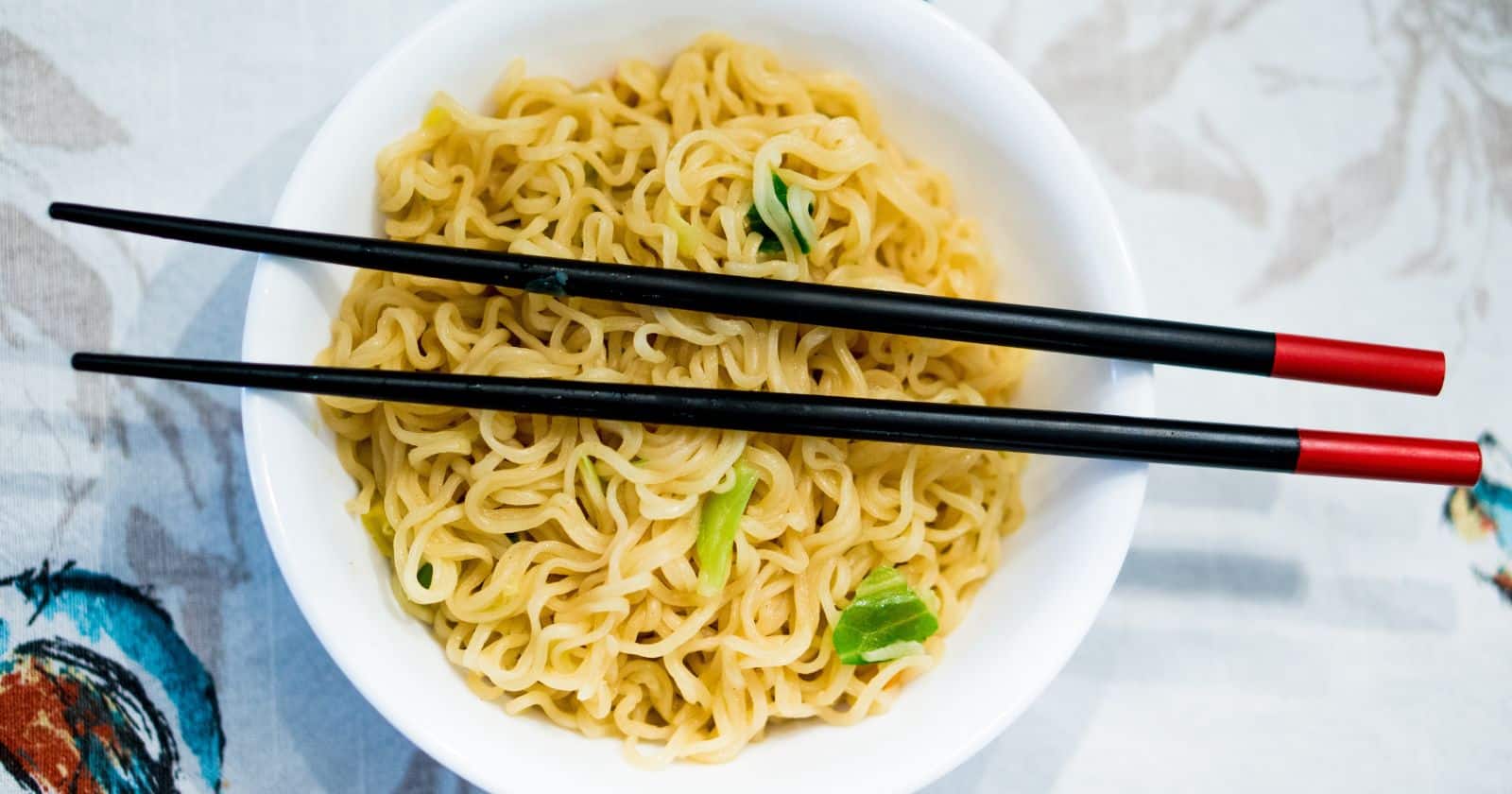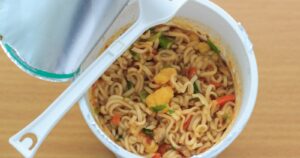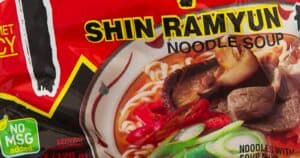Buldak ramen has reached sensation status for its tongue-scorching flavor. This Korean dish draws fans in with its intensely spicy chili kick. But with a name that literally means “fire chicken,” it’s not an option for vegetarians. If you crave buldak’s signature zing without the meat, you’re probably wondering: is buldak ramen actually vegetarian?
The short answer is no – buldak ramen contains chicken extract and animal products. But never fear, fiery vegans! With a few easy substitutions, you can enjoy knock-your-socks-off spicy noodle dishes that rival buldak.
In this article, we’ll share plant-based buldak recipes, tips for recreating the heat at home, and other vegetarian noodle options to satisfy your cravings. Get ready to break a serious sweat!
Buldak Ramen 101
Before we explore veggie options, let’s breakdown buldak ramen:
- Name means “fire chicken” – Buldak is Korean for spicy chicken. The dish originated from dak galbi, a chicken stir-fry.
- Signature spicy flavor – It gets its heat from gochugaru (Korean red pepper flakes) and gochujang (Korean red chili paste).
- Thick, chewy noodles – They stand up to the intense sauce and provide satisfaction.
- Chicken and seafood flavors – Classic buldak contain chicken extract. Newer seafood versions also contain animal products.
- Extreme heat challenge – People compete to eat the super-spicy noodle packs and test their tolerance.
With its decadent, tongue-tingling flavor, it’s no wonder buldak has a passionate fanbase. But the chicken and seafood bases make it a no-go for vegetarians. Time for some spicy vegan alternatives!
Why Seek Out Vegetarian Versions?
There are a few good reasons to find a vegetarian workaround:
- Ethical reasons – Vegans and vegetarians exclude animal products for ethical reasons. Buldak contains chicken.
- Health reasons – Some limit meat intake for health. Plant-based diets are linked to benefits like lower BMI.
- Environmental reasons – Animal agriculture has impacts like deforestation and emissions. Vegetarian diets have lower footprints.
- Allergies – Those with seafood allergies must avoid buldak’s new seafood flavors.
Luckily it’s easy to replicate buldak’s savory
Key Ingredients in Buldak Ramen
To craft meatless buldak, it helps to know the usual ingredients:
- Noodles – Wheat flour noodles, sometimes with added potato starch or tapioca.
- Seasoning – Flavor packets contain gochugaru, gochujang, dried garlic, onion, sugar, sesame oil.
- Chicken extract – This adds umami flavor but must be replaced in veg versions.
- Vegetable oil – For frying noodles. Opt for sesame oil for best flavor.
- Thickeners – Gums like xanthan and guar help create a clingy sauce.
With the chicken extract swapped for vegan umami flavors, buldak can transform into a vegetarian sensation.
Tofu Buldak Ramen Recipe
Tofu makes the perfect protein replacement for spicy, meaty buldak ramen. Try this recipe:
Ingredients
- 1 pack instant ramen noodles
- 1 block firm tofu, diced
- 3 tbsp gochujang
- 2 tbsp soy sauce
- 1 tbsp brown sugar
- 3 garlic cloves, minced
- 1-inch ginger, minced
- 1 tbsp sesame oil
- Green onions, chopped
Instructions
- Cook ramen noodles per package instructions. Drain and set aside.
- In a pan over medium heat, fry tofu cubes until crispy and browned. Set aside.
- Add gochujang, soy sauce, brown sugar, garlic and ginger to pan. Cook until sauce bubbles and thickens.
- Add cooked noodles and tofu to pan. Toss to coat in sauce.
- Top with green onions and enjoy!
Spicy, meaty tofu perfectly mimics buldak in this vegetarian dish. For added veggies, toss in mushrooms, spinach or kimchi.
Mushroom Buldak Ramen
Sautéed mushrooms can also stand in for chicken in buldak ramen. Try this umami-packed recipe:
Ingredients
- 1 pack instant ramen noodles
- 8 oz mushrooms (shiitake, cremini, etc), sliced
- 3 garlic cloves, minced
- 1 tbsp grated ginger
- 1 tbsp sesame oil
- 3 tbsp gochujang
- 2 tbsp soy sauce
- 1 tbsp honey
- 2 tsp sesame seeds
- Green onion, sliced
Instructions
- Cook ramen noodles per package directions. Drain and set aside.
- In a pan, sauté mushrooms in sesame oil over medium-high heat until browned.
- Add garlic, ginger and sesame seeds. Sauté until fragrant.
- Add gochujang, soy sauce, honey. Cook until sauce thickens.
- Add cooked noodles. Toss to coat in sauce.
- Garnish with green onions.
Shiitake and cremini mushrooms lend rich, savory umami flavor that mimics the taste of meat in this veggie buldak. Add zucchini, peppers or bok choy for extra vegetables.
Spicy Vegan Ramen Noodle Soup
For a simple vegan buldak, try this quick and fiery noodle soup:
Ingredients
- 1 pack instant ramen noodles
- 4 cups vegetable broth
- 3 tbsp gochujang
- 1 tsp garlic powder
- 1 tsp ginger powder
- 1 block firm tofu, diced
- 2 cups mixed vegetables (carrots, mushrooms, spinach)
Instructions
- In a pot, combine vegetable broth, gochujang, garlic powder and ginger powder. Simmer 5 minutes.
- Add vegetables and tofu. Cook 3 minutes until tender.
- Add ramen noodles. Cook per package instructions.
- Serve soup piping hot and enjoy!
The gochujang, garlic and ginger create the signature buldak flavor, while vegetables and tofu make it hearty. Top with kimchi for extra
More Vegetarian-Friendly Noodle Options
Beyond buldak, plenty of meatless noodle dishes can satisfy your cravings:
Pad thai – Rice noodles stir-fried with tofu, vegetables and Thai sauce.
Lo mein – Chinese wheat noodles sautéed with mushrooms, cabbage, carrots.
Soba noodles – Japanese buckwheat noodles served cold with dipping sauce.
Spaghetti marinara – Pasta with tomato sauce, mushrooms, olives, peppers.
Thai curry noodles – Rice vermicelli in coconut curry broth with tofu.
Pesto pasta – Spaghetti tossed in basil pesto sauce. Add white beans or chickpeas.
With a bowl of spicy buldak-style vegan noodles, tasty pad thai or comforting lo mein, there are so many ways to get your noodle fix without the meat. Now grab your chopsticks – it’s time for some slurping!





